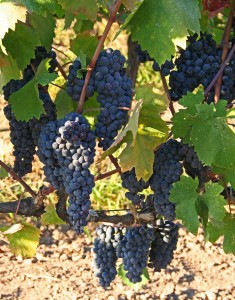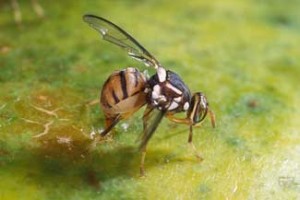http://www.healthycal.org/archives/6783/print/
A year after environmentalists lost a regulatory battle to keep controversial pesticide methyl iodide off the California market, they appear to be winning the ground war against the chemical.
Only six California growers have used methyl iodide—marketed as Midas—to zap soil borne pests and weeds before planting crops like chile peppers, strawberries and walnut trees.
Methyl iodide manufacturer Arysta LifeScience Corp. paid for at least two of the fumigations. The company shared in the cost of a third, according to the grower.
By way of comparison, more than 8,500 soil fumigations took place in California in 2009, the last year for which data is available from the state’s Department of Pesticide Regulation.
“Methyl iodide is a speck on the horizon,” said Les Wright, Fresno County Agricultural Commissioner.
Growers and agriculture industry groups clamored for methyl iodide registration last year before the California Department of Pesticide Regulation gave the chemical its final approval.
They pointed to the coming ban on methyl bromide, one of the most effective and widely used fumigants in the state, and argued that without methyl iodide, California’s billion-dollar agriculture industry would hemorrhage jobs and profits. Methyl bromide is currently being phased out under the Montreal Protocol; it’s expected to be eliminated altogether by 2015.
But now, some growers say methyl iodide is too politically risky to use.
“The people who oppose this particular chemical are really loud and effective,” said Liz Elwood Ponce, co-owner of Lassen Canyon Nursery in Redding. “If no one said anything, I think the chemical would be used more widely. But the objection has pretty much paralyzed the growers into no action.”
Methyl iodide use has been so rare that Arysta put out a press release last October to announce its first application on the Central Coast, which took place only after the Santa Barbara County Ag commissioner dismissed a challenge to the fumigation permit by environmental law firm Earthjustice.
The controversy over methyl iodide had simmered for years, but it erupted in 2010 when Department of Pesticide Regulation managers overruled both their own staff scientists and an agency appointed peer review panel to approve the chemical for use in California agriculture.
UCLA professor John Froines, who chaired the peer review committee, appeared at a state assembly hearing in Sacramento last April and said “science was subverted” in the state’s decision to approve methyl iodide.
“I would not want my family, my friends or anyone else to live or work or go to school near fields where this methyl iodide will be used,” Froines said after detailing the chemical’s properties that are known to cause cancer and damage nervous systems. “You had the best science you could have had and the fact that it was ignored is devastating.”
Earthjustice and California Rural Legal Assistance have sued the state Department of Pesticide Regulation on behalf of environmentalists and farm workers, arguing that regulators put politics before safety in approving methyl iodide, and demanding the decision be reversed. A Fresno County methyl iodide application last summer drew protests, and last month, Santa Cruz County Supervisors passed a resolution urging Gov. Brown to reconsider methyl iodide registration. Last March, the governor told a Ventura County newspaper that his administration would take a fresh look at the decision, but he’s taken no action since then.
So far no health and safety issues related to the five California applications have been reported.
But the political heat is too much for growers, especially those with recognizable labels, Elwood Ponce said.
“Big growers that market in all these stores can’t take a chance on a boycott”, said Elwood Ponce.
“Methyl iodide is indeed a political hot potato”, said Paul Towers of the Pesticide Action Network of North America, whose group is a plaintiff in the methyl iodide lawsuit. “But what made it a political hot potato is grounded in scientific reality.”
Dennis Lane, a sales manager for Trical, Inc. a Hollister-based company that markets and applies fumigants, said he thinks slow sales are normal for a new product.
“They haven’t seen it on their farm,” Lane said of California growers.
So far, at least one farmer, Tzexa Lee of Fresno County’s Cherta Farms, said his experience with an Arysta-funded fumigation was mixed. He lost 20 percent of the chile peppers he planted, and doesn’t know why. The company took soil samples, but representatives haven’t given Lee any answers yet. Still, he said the chemical was great at weed killing.
“No workers were needed for weeding,” Lee said.
The other Fresno County application was also a bust. But grower David Sarabian said the loss of the chiles he planted after the fumigation was due to scorching hot summer temperatures, not the chemical.
In Florida, the company reported 14 incidents of minor plant damage to Ethe PA in 2008 and 2009. Such post-fumigation problems are reportedly rare.
In California, the high cost of methyl iodide may be keeping some growers away. Lane also noted that state-mandated half-mile buffer zones between fields that are fumigated with methyl iodide and homes, schools, day care centers and other such sensitive sites also limit its use because of the proximity of agricultural land to neighborhoods, especially in coastal areas.
“It almost makes it unusable,” Lane said.
Arysta officials declined to discuss methyl iodide use in California. The company’s website says Midas has been successfully applied on more than 17,000 acres in the southeastern U.S.
However, in several of those states, including Florida, one of the nation’s biggest agricultural producers, officials say methyl iodide use has been light.
In an email, Dennis Howard, chief of Florida’s Bureau of Pesticides, wrote that based on his discussions with Arysta and growers, “…my understanding is that very few if any applications are occurring in Florida.”
At North Carolina State University, plant pathologist and extension specialist Frank Louws said, “The Montreal Protocol has seen methyl iodide as a true replacement (for methyl bromide) but our growers have not gravitated that way.”
In California, the fate of methyl iodide is in the hands of Alameda County Superior Court Judge Frank Roesch, who will hear the Earthjustice case in January.
“I think many people are waiting to see what is the outcome of this lawsuit,” said Rick Tomlinson, public policy director of the California Strawberry Commission. “Farmers live in these communities. They’re not going to rush in and adopt something when there’s a concern.”
 I had the pleasure this week of welcoming a gathering of research scientists, grape growers, winemakers and officials to Sacramento for the 2011 Pierce’s Disease Research Symposium. This event gives researchers from California universities and their colleagues from across the nation and around the world an opportunity to accelerate and fine-tune their work by sharing insights, discoveries and technical information.
I had the pleasure this week of welcoming a gathering of research scientists, grape growers, winemakers and officials to Sacramento for the 2011 Pierce’s Disease Research Symposium. This event gives researchers from California universities and their colleagues from across the nation and around the world an opportunity to accelerate and fine-tune their work by sharing insights, discoveries and technical information.



